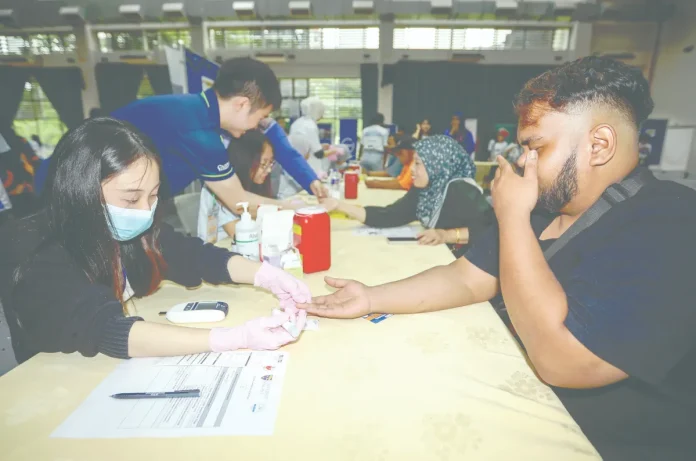Clinicians report rising Type 1 and Type 2 diabetes cases among Malaysian children, with more severe symptoms and complications emerging nationwide
PETALING JAYA: Malaysia may be facing a far more serious childhood diabetes crisis than official records suggest, with clinicians nationwide reporting more frequent and more severe cases since the last national data was published in 2019, said Diabetes Malaysia president Prof Dr Muhammad Yazid Jalaludin, who is also Universiti Malaya Medical Centre senior consultant paediatric endocrinologist.
He said clinical trends over the past five years point to a clear rise in both Type 1 and Type 2 diabetes among children and adolescents.
“Since 2019, we have seen a steady increase in new diagnoses. Globally and regionally, Type 1 diabetes has been rising by about 3% to 5% annually, and Malaysia is likely following the same pattern.”
“For Type 2 diabetes, the rise appears to be even steeper, driven by childhood obesity, sedentary lifestyles and dietary habits.”
He said paediatric endocrinologists nationwide are reporting younger patients with diabetes – often with more severe symptoms – a trend that accelerated after Covid-19 disrupted routine health screenings and physical activity.
“While we await updated national surveillance, the clinical picture is clear – the numbers are going up.
“We urgently need to intensify early detection, prevention and education efforts rather than wait for new statistics.
“Every child must have access to screening and healthier environments,” he said, while stressing that updating and maintaining a national childhood diabetes registry must now be a top priority for the Health Ministry.
“Without current data, we are essentially flying blind.”
“A registry is not just about numbers – it saves lives.
“It tells us where the burden is growing, who is most affected and whether our interventions are working.”
However, he said there are persistent challenges, including inconsistent reporting, under-detection of milder cases, data standardisation issues and the absence of integrated electronic medical records across states.
“Many childhood diabetes cases are managed outside tertiary centres and may not be captured.
“But with proper investment in digital infrastructure and systematic reporting, it is achievable,” he said, adding that Diabetes Malaysia is ready to work with the ministry and specialists to strengthen national surveillance.
He emphasised that data must also reach policymakers and educators.
“Childhood diabetes is everyone’s concern.”
Muhammad Yazid confirmed a worrying rise in Type 2 diabetes among children – once considered rare in the young.
“We are definitely seeing more Type 2 diabetes in children, sometimes in those as young as 10 or 11,” he said.
“The pandemic accelerated the problem. Long periods of school closure, decreased physical activity, increased screen time and easier access to calorie-dense foods led to significant weight gain.”
More children are also being afflicted with complications such as fatty liver disease and hypertension.
“This shows that many children are not being screened early enough,” Muhammad Yazid said.
He warned that the trend is both real and significant, calling for comprehensive prevention programmes in schools, greater parental awareness and early screening in primary care.
“Diabetes Malaysia wants to do more, by working with schools, communities and national agencies to promote healthier lifestyles. But this must be a nationwide effort.”
“If we act now, by combining education, early screening and supportive environments, we can reverse this trajectory and protect the next generation,” he said.







